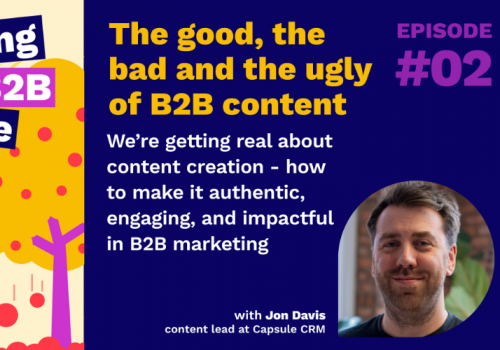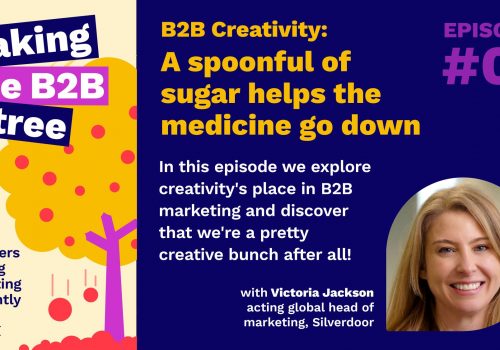Over the past two years, the Covid pandemic has accelerated the digital transformation of businesses. This is particularly true in the B2B landscape, where companies have increasingly engaged with customers through digital spaces (social media platforms, webinars, chatbots – you name it). But this practical approach that was appropriate during the pandemic shouldn’t let us forget the importance of a long-term digital content strategy. In this post, we give you some insight into how to set up a topic clusters strategy, a model that will help you regain the big picture pivotal to your digital content framework.
1. Topic cluster: why content (with context) is the key
How we search for things online is constantly changing, and the way search engines function is no different. A few years ago, a B2B company looking for advice to become greener may have searched for simple keywords such as ‘B2B sustainability’. But today, this may look more like ‘How can a B2B business best manage sustainability’. In a nutshell, our queries are becoming more narrative and articulated, almost like a conversation.
And this is where topic clusters stand out. Search engines (aka Google) are improving how they identify and relate topics, exploring enquiries through broader subjects than the ones we flag. They are looking for common questions around the issue highlighted, searching for synonyms and related information – remember the feature ‘People also ask’ on Google. And this is precisely what topic clusters do. They bundle groups of related content in your website, covering a broad topic area. As a result, they create strong relationships within the related topic, helping search engines to understand the hierarchies and relationships within your pages. In other words, they provide the necessary context for search engines to better reply to consumers’ queries, which has a direct impact on your ranking in the search engine results page – and don’t forget, if it’s good for search engines, it will be great for your digital content strategy.
The three main elements of a topic cluster
To better understand a topic cluster, let’s talk about its three main components:
- One pillar content: this is the broader subject area your content will be focusing on (an area you’re interested in raising your authority). For example, if you want to focus on ‘sustainability’, you can create a pillar page on your site – perhaps on your corporate blog, referenced as ‘Our sustainable strategy’. As you see, pillar contents focus on long-tail keywords with high search volumes. They are the main point of reference for your related content, and as we’ll explain later, the place we should be linking to.
- Several cluster pages: these pages will cover different angles of your main topic with more breadth, providing meaningful content to your pillar page. In our sustainability case, you can span themes like ‘5 best tips to build a green business’, ‘3 sustainable supply chain examples’, ‘B2B environmental strategy: key challenges’, etc. With these cluster pages, you will be covering less competitive keywords allowing you to attract more traffic in the short term (meanwhile, gaining authority in the long-term for your key pillar content).
- Multiple internal links: they’re the bread and butter of your topic cluster strategy, as they provide search engines with information about the relevance and relationship between your pages. But be wise when using them. Interlink your content, but always keep the pillar content at the top of your hierarchy – we want our pillar content to be the first one on the search engine results page, instead of a particular cluster page. Overall, internal links provide context to your content, and in terms of SEO, they share PageRank, which means they pass their value between pages in your cluster. In other words, the more, the better – provided of course, that you’ve got quality content and these pages cover the same related topic.
2. Why are topic clusters significant?
As focal points of content attraction for search engines, topic clusters are essential for several reasons:
- They create clear links between your content, enhancing context and organisation within your content strategy.
- They allow you to showcase your knowledge on crucial topics for your business, increasing your relevance for search engines (and consumers), as they will see you as an authority on the subject in the long term.
- They provide coherence to your keywords, internal links, and SEO strategy, allowing your content to improve its rank on the search engine results page.
3. Summarising: encompass the big picture
Going back to the starting point of this article, it’s time to get to grips with your content strategy and start planning for the long-term. So, choose your pillar contents, search at first for those long-tail keywords that will nurture your cluster pages and start building your topic clusters strategy now. It will pay off. And if you need help mastering the art of creating compelling stories, just give us a shout. That’s what we do best, crafting vibrant content for B2B businesses that want to stand out from the crowd.











